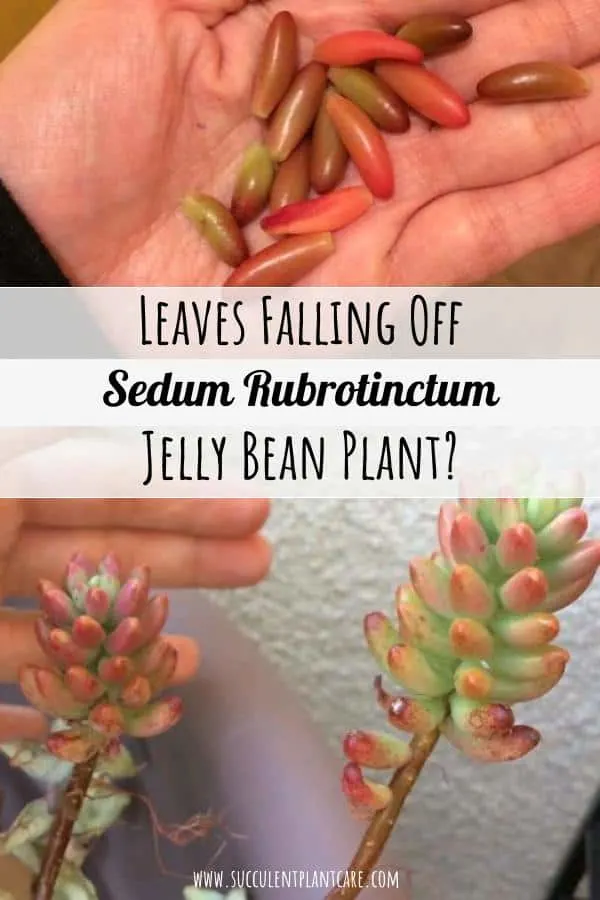Jelly Bean Plants (Sedum Rubrotinctum) have small, plump, jelly-bean shaped leaves.
These leaves are a bit fragile and can easily fall off. You will often find one or two leaves on the ground where the mother plant is planted, and that is normal.
But if you are losing leaves from your jelly bean plant at an alarming rate, then there usually is a reason and a quick solution for this.

Why Are The Leaves on My Jelly Bean Plant Falling Off?
The most common reason for falling leaves off your Jelly Bean plant is watering issues. Jelly Bean plants will drop their leaves if underwatered OR overwatered. An underwatered Jelly Bean plant will drop its leaves from the bottom up to conserve water. It’s a survival mechanism the plant uses to adapt to its very dry surroundings. An overwatered Jelly Bean plant will also drop its leaves from the bottom up. Giving too much water will cause the leaves to swell and fall off the plant.
If your Jelly Bean Plant is losing leaves at an alarming rate and you don’t know why, chances are the plant is suffering from watering issues, either too much or not enough. Here’s how you can tell if your plant is being underwatered or overwatered.
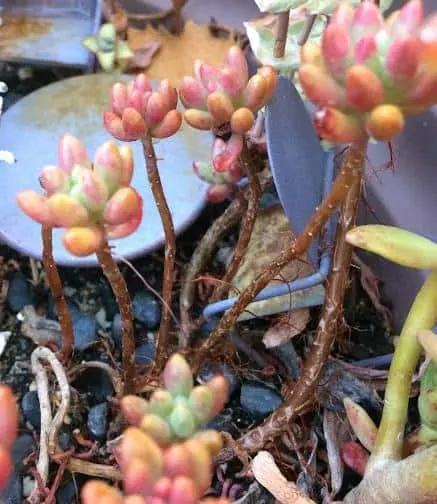
Underwatered Jelly Bean Plant
An underwatered jelly bean plant will have shriveled up, dried leaves starting from the bottom of the plant. You can tell if the plant is underwatered if the bottom leaves start drying out and shriveling, and the leaves of the jelly bean plant start to lose their plumpness and become thin and withered. An underwatered jelly bean plant will drop the bottom leaves at an alarming rate to conserve water and to support the plant.
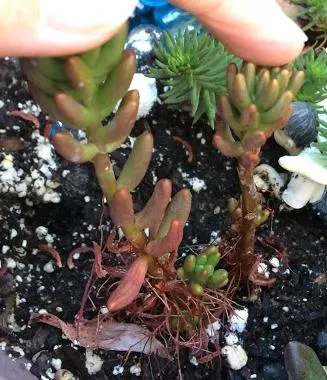
Solution: Increase watering. The plant should perk up almost immediately after a good watering. Water thoroughly and give the plant a good drink then wait until the soil is dry before watering again. From my experience with Jelly Bean plants, they like to be watered thoroughly and then dry out in between waterings. I never mist or lightly water my jelly bean plants, but instead give it a good drink about once every ten days during hot summer months. I decrease watering when it gets cooler. Keep in mind that I live in a dry climate. Your watering needs would differ depending on the climate you live in.
Overwatered Jelly Bean Plant
An overwatered jelly bean plant will also drop its leaves at an alarming rate starting from the bottom of the plant, but the leaves will have a different appearance. An overwatered jelly bean plant will have leaves that appear more translucent. Instead of appearing thin and shriveled up, the leaves will be soft and mushy and will fall off very easily when touched even lightly.
Solution: Cut back on watering and wait until the soil is dry before watering again. I always tend to underwater as opposed to overwater my succulents. A good rule of thumb is to feel the top inch of the soil before watering. The soil has to feel dry before you water again.
If your plant has been overwatered, allow the plant to dry out completely before watering again. It will also help tremendously if you have a fast-draining soil. If you think you made a mistake with they type of potting mix you used, you can always remove the plant and replant it in a more suitable potting mix.
You can augment the potting mix by adding drainage such as pumice or perlite. For more on succulent soil recipes, please click on “Best Soil and Fertilizers for Succulents.”There are tools such as moisture meters and hygrometers to check for moisture levels in the soil and in the air. Please click on my resource page for product recommendations.
Low Light Can also Cause Leaves to Fall Off
Another common reason for leaves to fall off your Jelly Bean plant is inadequate sunlight along with too much water.
The leaves become even more fragile and will easily fall off when brushed against. This usually develops over a period of time and does not happen right away. It takes a few weeks or months for the plant to start suffering from inadequate light. A plant that does not receive adequate light will start to etiolate or stretch out, looking for more sun and will have a long, overstretched appearance.
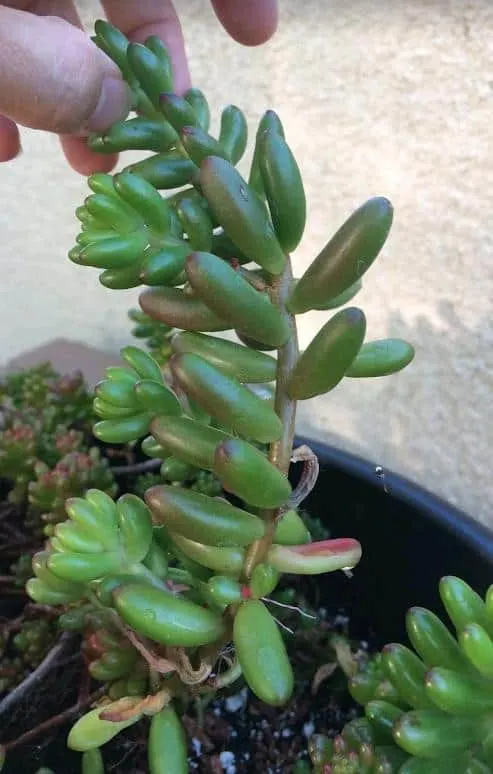
An etiolated Jelly Bean plant
If the plant is not receiving adequate sunlight and is being overwatered at the same time, this is a sure recipe for disaster.
Solution: If this is the case for your Jelly Bean plant, move the plant to a brighter spot with more sunlight. This should help solve the problem and the plant will readjust and start regrowing new leaves. When moving to a sunny location, it is a good idea to increase sunlight slowly to avoid sun damage. If for some reason you are unable to provide more light, you can consider using a grow light to correct the problem.
Too Much Heat Can Also Cause Leaves to Fall Off
If the plant is exposed to intense heat or full sun, especially if it has not been acclimated to full sun, you will notice the leaves will have brown, sunburnt spots on them. If you leave your jelly bean plant under full, intense sun and you start noticing sunburn spots on them, the leaves will also appear shriveled, toast, and dried up. The plant will lose its leaves from sunburn if the problem is not corrected.
Solution: Move the plant to a shadier location. If you are planning to leave the plant in a very sunny location or under full sun, slowly acclimate the plant by increasing sun exposure slowly to prevent sun damage. Even a Jelly Bean plant that has been acclimated to full sun can still suffer from sun damage during a heatwave. You can move your plant to a shady spot when a heatwave is anticipated.
Healthy Jelly Bean Plants
A healthy jelly bean plant will normally drop their old leaves from the bottom of the plant as new growth develops. You will typically find one or two leaves here and there, which is normal for this type of plant.
The leaves on these plants are pretty fragile and will easily fall off when transporting or moving the plant, repotting, or even when there is strong winds and the plant is left outdoors. But a healthy plant still maintains most of its leaves intact, and shouldn’t be dropping leaves at an alarming rate.
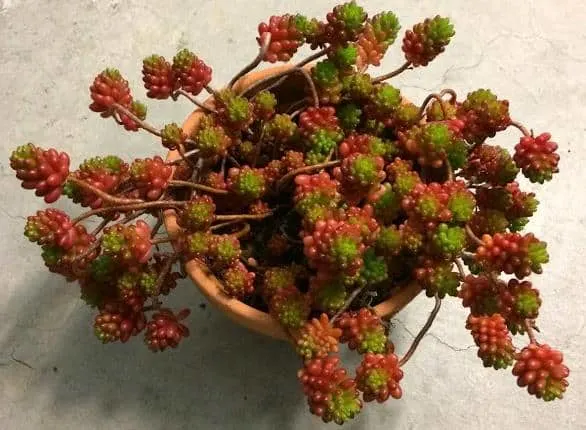
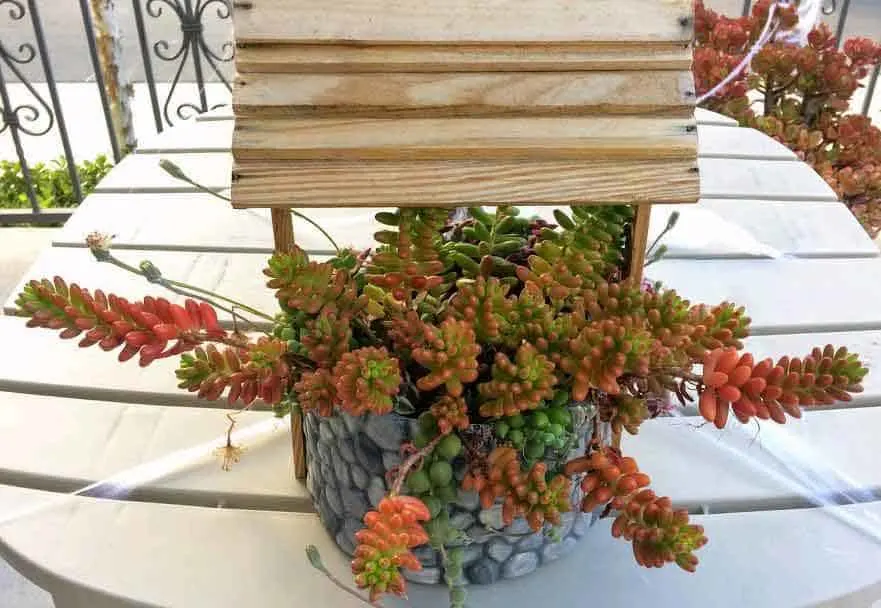
Will the Leaves Grow Back? Jelly Bean plants are resilient plants and they often bounce back from whatever it was that was causing them trouble. If your jelly bean plant dropped a lot of its leaves and you have found the reason and corrected the problem, you will soon notice new growth along the stems of the plant. These new growths are slow in the beginning, but you will soon notice your plant filling up once again from where the leaves have fallen off.
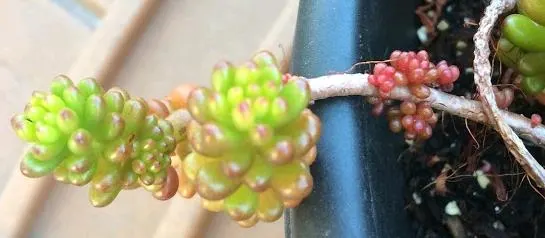
Should You Cut off the Stems to Replant or Propagate?
You have the option of leaving the plant alone and wait for new growth to develop as mentioned above, or you can choose to cut the stems to propagate and start new plants. I find Jelly Bean plants to be one of the easiest plants to propagate from stem cuttings. In fact, I have propagated plenty of Jelly Bean plants this way and have them growing in different containers.
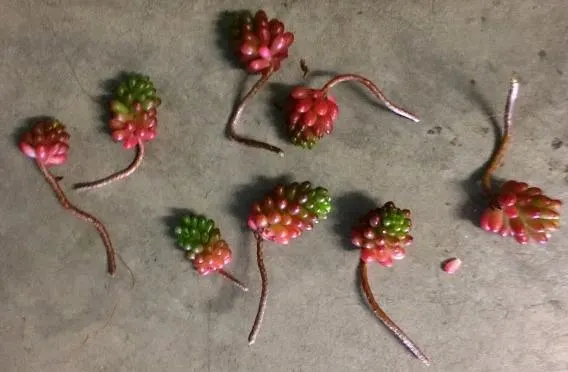
Simply cut the stems off and stick the cuttings in soil. You will sometimes find Jelly Bean plants sprouting air roots from the stems. These are the ones that are easiest to replant because they have already grown roots from the stems. For more information on propagating Jelly Bean plants, please click on “Jelly Bean Plant How To’s” for a step-by-step guide.
What Should You Do with the Fallen leaves?
Jelly Bean Plant can also be easily propagated from leaves. I usually just throw the fallen leaves back in the pot and allow them to root on their own. You can also facilitate this process by taking the fallen leaves and laying them on soil. Keep these leaves away from direct sunlight and mist every few days so they don’t dry out.
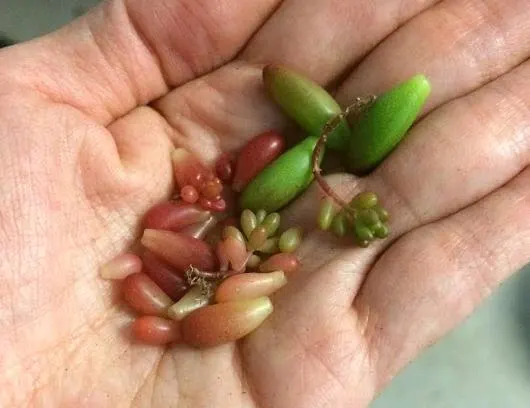
The leaves should start rooting in a couple of weeks, and soon you will see a new baby plant emerge from the fallen leaf. For a step-by-step guide on propagating Jelly Bean Plants, please click on “Jelly Bean Plant How To’s”.
How Do you Repot Jelly Bean Plants Without Losing or Damaging the Leaves?
If kept in containers or pots, Jelly Bean plants may need to be repotted from time to time. Good news is, you do not have to do this often. They like to stay snug and do not mind being crowded in a small pot. If you do decide to repot, you will lose some leaves no matter how careful you are. I usually just throw the leaves back in and a lot of them root on their own and become new plants. Some pointers when repotting Jelly Bean plants to minimize the damage:
- Wait until the soil is dry before removing from the pot. The plant will come out easier when the soil is dry.
- You can cut the pot. If the pot it’s in is plastic or similar material, you can opt to cut the pot to remove the plant carefully and minimize the damage to the plant and the leaves. Of course this would only work if you don’t mind losing the pot.
- Use a small garden spade to dig the plant out. Carefully dig around the sides of the plant using a small garden spade or a similar garden tool. If you do this carefully and patiently, you would be able to get the plant out with very little casualties. To read more about repotting Jelly Bean Plants, please click on “Jelly Bean Plant How To’s”.
To read more about common problems with succulents, please click on “Common Problems with Succulents and How to Fix Them.”
